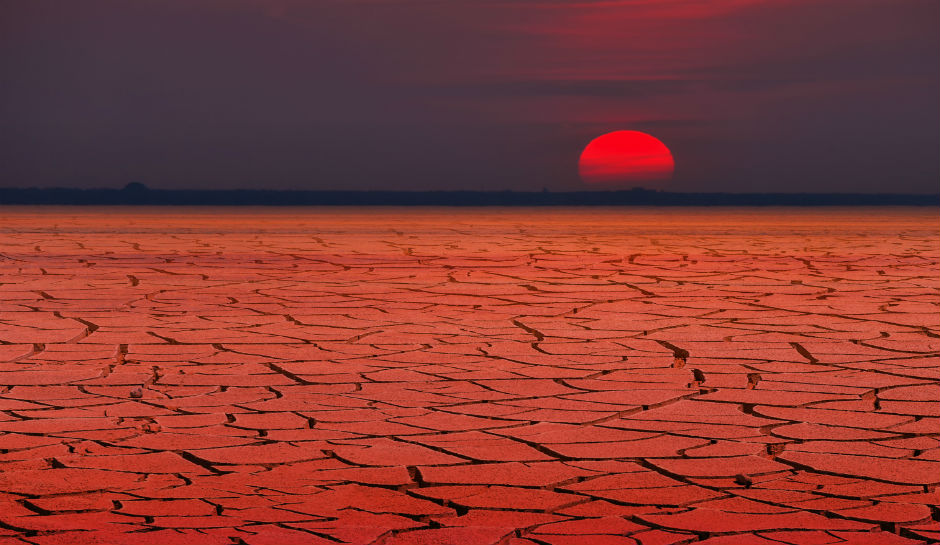
The heat is on.
This year has already seen heat so hot in Phoenix, Arizona that commercial jets were unable to fly. In Tulare County, California heat buckled train tracks, causing a cargo train to derail. And in Antarctica, a melting ice sheet is about to produce an iceberg the size of Delaware. Along with the heat—and changing weather patterns—comes death.
DARA, a Spanish non-profit, predicts that by 2030 there will be “close to 700,000” deaths a year due to climate change. According to the World Health Organization, between 2030 and 2050, “climate change is expected to cause approximately 250,000 additional deaths per year.” A 2016 research article published by the Lancet, a British medical journal, estimated that by 2050 climate change could kill more than 500,000 people a year globally.
But just how will they die…?
“Hot weather alone is not dangerous,” explains a 2012 LiveScience article, quoting environmental physiologist Chris Minson. “Instead, it’s a combination of hot temperatures, high humidity, and often pre-existing health conditions.” The normal human body temperature is about 98.6 Fahrenheit, but these factors can push that temperature up to 104 F, considered the danger zone. “At that point,” the article continues, “the nervous system goes haywire, the heart experiences excessive stress and organ systems begin to fail.”
“The analogy we use is if you’re driving a car and you notice that the temperature light comes on,” reads an article in Scientific American on how heat kills. “What’s happening is the cooling system of the car is becoming overwhelmed. If you turn off the car and let it cool eventually you can start driving again. But if you continue to drive the car, the problem goes beyond the cooling system to affect the engine, and eventually, the car will stop.”
Like any piece of equipment, the human body starts to break down at a certain temperature. But the body’s limits are not cut and dry. Amazingly, “the human body can actually tolerate high temperatures quite well,” the Scientific American article continues. “In experiments, people have withstood temperatures as high as 215 F for as long as 30 minutes.”
Sauna temperatures typically run between 160 F and 210 F. The Thereme Erding sauna complex, near Munich, Germany can run as hot as 212 F. And in Death Valley, where the native Timbisha Shoshone tribe has lived for hundreds of years, temperatures regularly climb high into the 120s. On July 10, 1913, the hottest temperature on earth was recorded here: 134 F.
Blood is like our body’s thermostat. To keep the body cool in these extreme temperatures the heart pumps more blood to the skin, which causes blood vessels here to expand. This provides more surface area for the blood’s heat to dissipate, thus having a cooling effect on the body. In hot weather, the body produces more sweat, which also has a cooling effect, as it evaporates off the surface of the skin. This, in turn, cools the blood near the skin’s surface, which returns cooler blood back toward the heart and can help prevent the core from overheating.
But with too much heat, this sweat and blood-powered air conditioning system breaks down. “Evaporating beads of perspiration are replaced by pouring rivulets of sweat,” explains the LiveScience article. And “rivers of sweat do nothing to lower core temperatures.”
Another issue with heat lies in our brains.
“The brain and central nervous system are particularly sensitive to high internal temperatures,” says LiveScience, “which can cause confusion, strange behaviors, loss of memory and an inability to think clearly.” And this makes the situation particularly frightening because it takes away an individual’s natural ability to understand their deteriorating condition. All of this, the article adds, “makes it extremely difficult for a heat-stressed person to realize that he’s in trouble.”
The kidneys, which serve as our bodies fluid cleaning system may also be affected, “but it really hasn’t been studied very much,” says the Scientific American article.
We do know something about heat deaths. A 1901 heat wave in the eastern United States killed nearly 10,000 people. A 1972 heat wave that hit New York City and surrounding regions of the northeast killed 900 people. And a heat wave in 1988 is responsible for as many as 17,000 deaths in the U.S. In the past two decades heat waves have killed hundreds—if not thousands—of people across the Middle East and Asia.
The heat is on. And the heat will continue to be on.
“Heat is the number-one weather related killer in the US and around the world,” researchers announced at the 2015 fall meeting of the American Geophysical Union. “We show that heat stress…is projected to rapidly and dramatically increase, and that by mid-century crippling summertime conditions are possible across some of the most densely populated regions of the planet…By the end of the 21st century, the habitability of some regions of the planet may be questionable due to heat stress alone.”
The researchers do not provide a tally of heat deaths, but perhaps a frightening statistic is beside the point. The real message to get across is: Be prepared for the heat, and take precautions. More information on how to stay safe in extreme heat can be found on the Mayo Clinic’s page for heat exhaustion.









